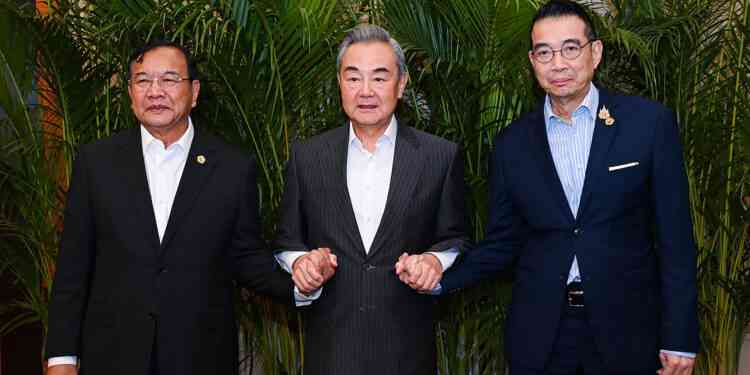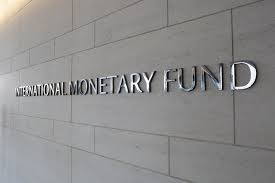
Mediation is usually cast as a noble exercise in international politics, easing tensions and preventing conflict from escalating. But when China positions itself as a mediator, the underlying logic is different. Beijing has turned mediation into a tool not of reconciliation but of resource extraction and strategic entrenchment. Its version of peace-making often comes wrapped in the language of harmony, yet the outcome consistently favours Chinese business and political leverage rather than the communities caught in conflict.
From borders to resource frontiersThe recent Thailand–Cambodia border conflict, the worst in over a decade, reignited long-standing territorial tensions. At least 38 people, mostly civilians, were killed and hundreds of thousands displaced. Against this backdrop, China emerged as an external mediator owing to its deep economic ties with both capitals. Foreign Minister Wang Yi offered to help “objectively and fairly” de-escalate tensions and promote dialogue, and during trilateral meetings he backed deeper cooperation in agriculture, energy, environmental governance, and law enforcement.
While these moves were presented as stabilizing efforts, they dovetailed neatly with Beijing’s interest in extending its investment footprint in infrastructure, rail, and surveillance. China did not act as a mediator in the impartial sense but was managing the relationship with a view to safeguarding its economic interests. Peacebuilding was not the priority. The priority was protecting Chinese investments, resource concessions, and infrastructure channels. Stability, in this calculus, became less an end in itself than a guarantee for Beijing’s long-term commercial reach.
Afghanistan tells a similar story. Since the Taliban’s return to power, China has cast itself as a bridge between Kabul and the international community, promising dialogue and regional stability. Yet beneath this rhetoric lies a clear strategic agenda. Chinese companies have secured oil extraction deals in the Amu Darya basin and reopened negotiations over Afghanistan’s vast copper and lithium reserves. Here, too, mediation is not about integrating Afghanistan peacefully into the global order but about ensuring that Beijing becomes the dominant external actor in its resource sector. Stability is treated as a prerequisite for resource extraction, not as a commitment to long-term peace. Dialogue is inseparable from China’s pursuit of the minerals that will fuel its industries for decades to come.
China’s mediation interests extend well beyond its immediate neighbourhood. In 2023, Beijing brokered the rapprochement between Saudi Arabia and Iran, a move that was hailed as a diplomatic triumph. Yet the underlying motive was clear: securing uninterrupted access to energy resources and projecting China as an indispensable power in the Gulf. What was celebrated internationally as a breakthrough in regional stability was also a strategic manoeuvre to entrench Beijing in the politics of oil.
In Africa, China has positioned itself as a facilitator in peace talks in both Sudan and South Sudan. Once again, the narrative was about stability, but the material reality was oil. Chinese state companies are heavily invested in Sudanese oil fields, and mediation served less to resolve deep-seated political conflicts than to protect the flow of crude essential to China’s economy.
Closer to home, Beijing’s role in Myanmar’s peace process with ethnic armed groups has similarly been driven by self-interest. By presenting itself as a broker, China has sought to shield its Belt and Road projects and cross-border trade routes from instability. Mediation in Myanmar is not about inclusive peace but about securing pipelines, infrastructure corridors and, more importantly, for a stable periphery for its southern provinces.
Resource architecture under the veil of peaceThis consistent pattern reveals a deeper problem. Mediation is being redefined not as an impartial effort to resolve disputes but as a transactional instrument that locks weaker states into asymmetrical relationships. In Southeast Asia, governments manage tensions in ways that keep Chinese capital flowing. In Afghanistan, a fractured state is pulled further into dependency on a single outside power, with little accountability for how resources are exploited or whether ordinary Afghans benefit at all.
- The brains behind Matavire’s immortalisation
- Red Cross work remembered
- All set for inaugural job fair
- Community trailblazers: Dr Guramatunhu: A hard-driving achiever yearning for better Zim
Keep Reading
The risk is that China’s brand of mediation hollows out the very idea of peace-making. Instead of building trust, dialogue, and reconciliation, it has become about securing markets, extracting resources, and embedding influence. The rhetoric of harmony and shared prosperity conceals a harder truth: Beijing is less interested in constructing a peace architecture than in cementing a resource architecture that serves its strategic interests.
Smaller states must recognize that mediation cannot be divorced from the aims of the actor offering it. Accepting Chinese mediation without scrutiny could mean ceding both autonomy and leverage. The danger is not simply that peace becomes a byproduct: it is that peace itself is repurposed into an instrument for advancing Beijing’s economic and geopolitical ambitions.
Rishan Sen is a researcher focused on Chinese foreign policy and its strategic footprint across Asia.









